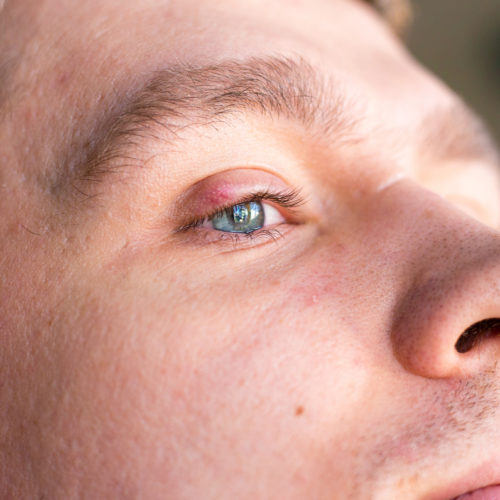Blepharitis
Blepharitis is a common ocular condition that primarily affects the eyelids and usually occurs in both eyes. Blepharitis appears as debris or scurf along the lid margin upon ophthalmic examination.1

The content provided on this page is provided for educational purposes only and is not a substitute for professional medical advice and consultation. Please consult your eye care or health care provider if you are seeking medical advice, diagnosis, or treatment. Click here for our full legal disclaimer.
Blepharitis is a common ocular condition that primarily affects the eyelids and usually occurs in both eyes. Blepharitis appears as debris or scurf along the lid margin upon ophthalmic examination.1

Blepharitis is a common ocular condition that primarily affects the eyelids and usually occurs in both eyes. Blepharitis appears as debris or scurf along the lid margin upon ophthalmic examination.1
Blepharitis is a common ocular condition that primarily affects the eyelids and usually occurs in both eyes. Blepharitis appears as debris or scurf along the lid margin upon ophthalmic examination.1 Blepharitis can present in 2 forms: anterior blepharitis or posterior blepharitis.
Anterior blepharitis: occurs at the base of the eyelash margin; usually caused by bacteria or dandruff, in the case of seborrheic dermatitis.
Posterior blepharitis: occurs on the eyelid margin that comes into contact with the eye; usually caused by meibomian gland dysfunction (MGD), whereas the oily layer of the tear film.3
Symptoms of blepharitis include:
Blepharitis can be caused by an overproduction of Staphylococcus bacteria on the base on the eyelash margin, clogged meibomian glands, or from skin conditions, like dermatitis or rosacea.1
Blepharitis is diagnosed based on a patient’s symptoms along with an eye care practitioner examining the front of the eye behind an ophthalmic microscope.
Medicated lid scrubs/wipes: remove the buildup of scurf along the eyelash margin.
Warm or hot compresses: heated compresses warm up the meibum inside our eyelids and allow for more optimal secretion onto the ocular surface.
Antibiotics: topical or oral antibiotics to rid of the bacteria on the eyelid margin.
Steroid drops: topical ophthalmic drops to reduce eyelid inflammation.
Restasis: immunosuppressive ophthalmic drops.
Treating underlying condition: In the case of associated skin conditions, treating the underlying condition is essential in improving the effect on the eyelids.2
Blepharitis can lead to other ocular issues, including hordeolum and chalazion (various versions of styes) and corneal issues. Lid inflammation and entropion (eyelashes turn inward toward the cornea) as a result of blepharitis can cause corneal injury and scarring, leading to decreased vision.1 It is recommended to maintain adequate ocular hygiene, ensuring to keep the eyelids as clean as possible and seeking care with an eye care provider when signs and symptoms persist or worsen.3
The content provided on this page is provided for educational purposes only and is not a substitute for professional medical advice and consultation. Please consult your eye care or health care provider if you are seeking medical advice, diagnosis, or treatment. Click here for our full legal disclaimer.